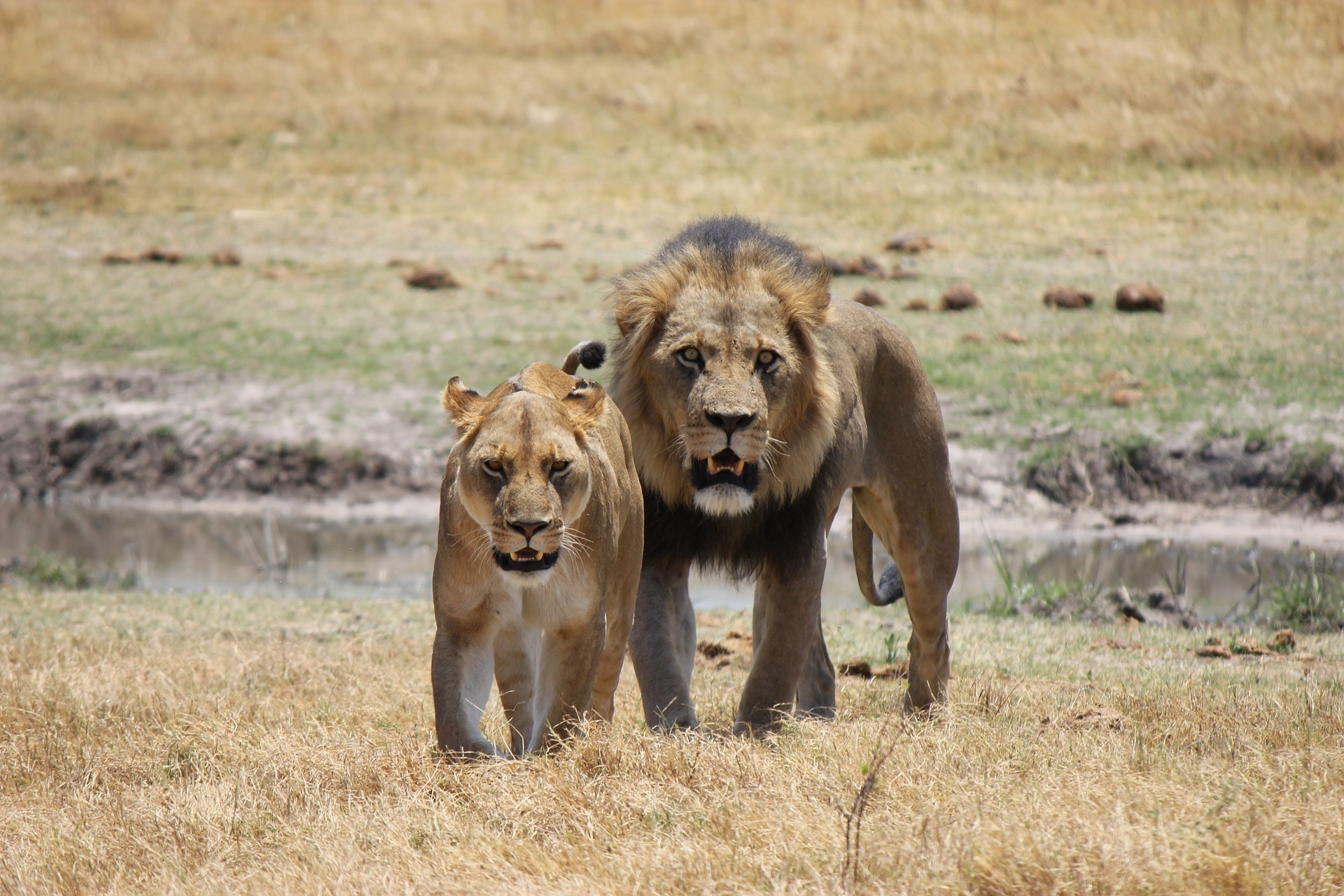Dare to be Different
You would be forgiven for assuming that this needs to be your favourite destination, but that does not change the fact that you will be more than surprised to find out that Botswana - like every African country 10 Degrees South - has much more to offer than only one single site.
The Makgadikgadi Pans- and Nxai Pans National Parks are typical destinations, which you could reach more easily and you would be well advised to visit these parks in the dry as well as in the rainy season, as the transformation is typical for Southern Africa - rain is the cause for a magical reawakening. The parks are situated roughly halfway between Maun and Nata on the A3 main road to Francistown in north-eastern Botswana. The turnoff is a little more than 150 kilometres east of Maun as you approach the village of Gweta, which offers lodge accommodation and allows you to refuel and restock your supplies.
The Makgadikgadi Pans are known to be the largest salt pans in the world and are visible remnants of the Makgadikgadi super lake that was found here more than five million years ago. The dried up lake turned into large pans and massive grass plains reaching beyond the horizon. The area hosts mostly zebra, springbok and wildebeest, but also offers exhilarating sights of large herds of giraffe, gemsbok and eland. Once the rain sets in, these herds - in search for greener pasture - move northwards into the Nxai Pan National Park, followed by predators such as lion, cheetah and hyena.
If you prefer to camp in the Makgadikgadi you may choose between the one at the foot of the Njuca Hills - only two sites and no water supply, found around 25 kilometres south of the main entrance gate - and Xhumaga, found almost 50 kilometres in a south-westerly direction from the entrance on the banks of the Boteti River. This camp has ablution blocks and water, but it would seem safe to ensure you bring some of your own drinking water too.
The Nxai Pan National Park is found north of the Makgadikgadi - literally across the street, i.e. above the A3 main road. It essentially comprises of the Nxai Pan, which is part of the Makgadikgadi pan salt flats. As such, the pan itself is a fossil lake bed and home to a cluster of age-old baobab trees, known as Baines’ Baobabs after the man, who discovered them - he probably first mapped them, as the San people surely would have known of them for ages. This park too allows for camping.
Being in Botswana, you will be offered an abundance of great lodges and accommodation sites, but once COVID-19 allows for open access again, you would be well-advised to plan and book ahead of time.
The Makgadikgadi Pans- and Nxai Pans National Parks are typical destinations, which you could reach more easily and you would be well advised to visit these parks in the dry as well as in the rainy season, as the transformation is typical for Southern Africa - rain is the cause for a magical reawakening. The parks are situated roughly halfway between Maun and Nata on the A3 main road to Francistown in north-eastern Botswana. The turnoff is a little more than 150 kilometres east of Maun as you approach the village of Gweta, which offers lodge accommodation and allows you to refuel and restock your supplies.
The Makgadikgadi Pans are known to be the largest salt pans in the world and are visible remnants of the Makgadikgadi super lake that was found here more than five million years ago. The dried up lake turned into large pans and massive grass plains reaching beyond the horizon. The area hosts mostly zebra, springbok and wildebeest, but also offers exhilarating sights of large herds of giraffe, gemsbok and eland. Once the rain sets in, these herds - in search for greener pasture - move northwards into the Nxai Pan National Park, followed by predators such as lion, cheetah and hyena.
If you prefer to camp in the Makgadikgadi you may choose between the one at the foot of the Njuca Hills - only two sites and no water supply, found around 25 kilometres south of the main entrance gate - and Xhumaga, found almost 50 kilometres in a south-westerly direction from the entrance on the banks of the Boteti River. This camp has ablution blocks and water, but it would seem safe to ensure you bring some of your own drinking water too.
The Nxai Pan National Park is found north of the Makgadikgadi - literally across the street, i.e. above the A3 main road. It essentially comprises of the Nxai Pan, which is part of the Makgadikgadi pan salt flats. As such, the pan itself is a fossil lake bed and home to a cluster of age-old baobab trees, known as Baines’ Baobabs after the man, who discovered them - he probably first mapped them, as the San people surely would have known of them for ages. This park too allows for camping.
Being in Botswana, you will be offered an abundance of great lodges and accommodation sites, but once COVID-19 allows for open access again, you would be well-advised to plan and book ahead of time.







Kommentar
Allgemeine Zeitung
Zu diesem Artikel wurden keine Kommentare hinterlassen